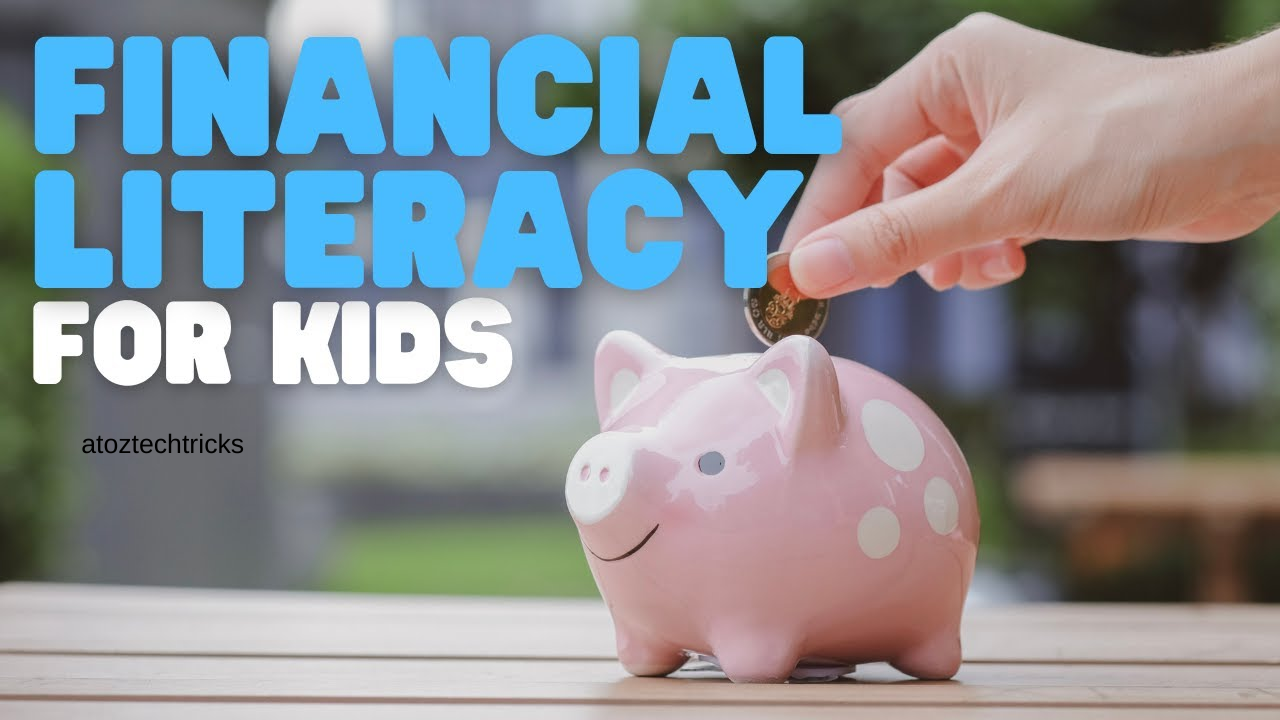Financial Education for Children: Building a Strong Foundation for the Future
In an increasingly complex financial world, early financial education is crucial for children to navigate their future successfully. Teaching kids about money management, saving, investing, and spending wisely can set them on a path to financial stability and independence. This comprehensive guide explores why financial education is essential for children, the key concepts to teach, and practical strategies for parents and educators to implement.
Why Financial Education Matters
Financial literacy is a fundamental life skill that impacts various aspects of life, including career choices, budgeting, and long-term financial planning. According to a study by the National Endowment for Financial Education (NEFE), individuals with early financial education are more likely to make sound financial decisions and achieve financial goals. Teaching children about money equips them with the tools to manage their finances effectively, avoid debt, and plan for their financial future.
- Early Habits Form Lifelong Practices
Children learn financial habits from their parents and caregivers. Instilling good financial practices early can lead to better financial behaviour as they grow. For example, a child who learns about saving and budgeting will likely carry these habits into adulthood. - Promotes Financial Independence
Financial education fosters independence. Children who understand money management are more capable of making informed decisions about their finances, which can lead to greater autonomy and less reliance on others for financial support. - Prepares for Future Challenges
The financial landscape is continually evolving, with new challenges such as student loans, credit scores, and digital currencies. Early education prepares children to face these challenges with confidence and knowledge.

Key Concepts in Financial Education for Children
Financial education encompasses various concepts that children need to understand to manage their money effectively. Here are some key concepts to introduce:
- Understanding Money
Before diving into complex financial topics, children should understand what money is and how it works. This includes learning about different types of currency, the concept of exchange, and the role of money in daily transactions. - Earning Money
Teaching children about earning money involves explaining the value of work and the concept of income. Children can start with simple chores or small jobs to earn their allowance. This helps them understand that money is earned through effort and not simply given. - Saving and Budgeting
Saving and budgeting are essential skills for financial management. Children should learn how to set savings goals, create a budget, and track their spending. This can be done through simple activities like saving for a toy or planning how to spend their allowance. - Spending Wisely
Making informed spending decisions is crucial. Teach children to differentiate between needs and wants, and to make thoughtful choices when purchasing items. This helps them develop a sense of value and prioritize their spending. - Investing Basics
Introducing the basics of investing can be done through age-appropriate explanations. Explain concepts like compound interest and the idea of making money work for them. Simple tools like piggy banks or savings accounts can help illustrate these concepts. - Understanding Credit and Debt
As children grow, they will encounter credit and debt. Explain how credit works, the importance of borrowing responsibly, and the potential consequences of debt. This helps them understand the importance of maintaining good credit and avoiding excessive debt. - The Importance of Giving
Financial education also includes teaching children about the value of giving back. Discuss charitable donations and the impact of helping others. This fosters a sense of social responsibility and empathy.
Teaching Children about Money and Budgeting: A Comprehensive Guide
Strategies for Teaching Financial Education
Teaching financial education effectively involves using various strategies to make learning engaging and relevant. Here are some practical approaches:
- Use Real-Life Examples
Incorporate real-life situations into lessons to make them more relatable. For instance, involve children in family budgeting discussions or let them help with grocery shopping and compare prices. - Play Financial Games
Games and activities can make learning about money fun. Board games like Monopoly or online simulations can teach concepts like investing, budgeting, and strategic spending. - Create a Savings Plan
Help children set up their savings goals and create a savings plan. Use jars or piggy banks to separate money into categories like saving, spending, and giving. This visual approach can help them understand the concept of budgeting and saving. - Teach Through Technology
Utilize apps and online tools designed for financial education. Many platforms offer interactive experiences for children to learn about money management and investment in a digital format. - Encourage Hands-On Learning
Allow children to manage their money through practical experiences. This could involve setting up a small business, managing a lemonade stand, or participating in a family investment project. - Lead by Example
Children learn by observing their parents. Model good financial behaviour by practising responsible spending, saving, and investing. Discuss financial decisions openly with your children to demonstrate real-world applications. - Incorporate Financial Education into Daily Routines
Integrate financial lessons into everyday activities. For example, when shopping, discuss the cost of items, the importance of comparing prices, and how to make budget-friendly choices.
Age-Appropriate Financial Education
The approach to financial education should vary based on the child’s age and developmental stage. Here’s a breakdown of what to teach at different ages:
- Ages 3-5: Basic Concepts
- Understanding Money: Introduce basic concepts of money using coins and bills. Use play money to simulate transactions.
- Simple Saving: Use a piggy bank to teach the concept of saving for a specific goal.
- Ages 6-8: Earning and Spending
- Earning Money: Give small chores to earn money, explaining the value of work.
- Basic Budgeting: Use simple budgeting activities like allocating allowance into saving, spending, and giving jars.
- Ages 9-12: Saving and Budgeting
- Detailed Budgeting: Introduce more complex budgeting concepts, such as creating a simple budget and tracking expenses.
- Saving Goals: Help children set and achieve savings goals for larger items.
- Ages 13-15: Investing and Credit
- Introduction to Investing: Explain basic investment concepts, such as stocks, bonds, and compound interest.
- Understanding Credit: Discuss how credit works, the importance of maintaining a good credit score, and the consequences of debt.
- Ages 16-18: Advanced Financial Skills
- Managing Finances Independently: Teach how to manage a bank account, budget for expenses, and understand taxes.
- Long-Term Planning: Introduce concepts of long-term financial planning, including saving for college and understanding student loans.
Encouraging Savings and Investment Habits: A Comprehensive Guide
Resources for Financial Education
Several resources can support financial education for children:
- Books
- “The Berenstain Bears Trouble with Money” by Stan and Jan Berenstain
- “Money Ninja: A Children’s Book About Saving, Investing, and Giving” by Mary Nhin
- Online Tools
- KidzBank: A virtual bank platform for kids to manage their money.
- PiggyBot: An app that helps children track their savings, spending, and giving.
- Educational Websites
- Jump$tart: Offers resources and standards for financial literacy.
- National Endowment for Financial Education (NEFE): Provides educational materials and tools.
Introducing Children to Credit and Debt: A Comprehensive Guide
Overcoming Challenges in Financial Education
Teaching financial education can come with challenges, such as:
- Lack of Resources
Not all families have access to financial education resources. To overcome this, use free online tools, community programs, and educational websites. - Complexity of Concepts
Some financial concepts can be complex for children. Break down concepts into simpler, age-appropriate explanations and use practical examples. - Parental Involvement
Financial education requires active participation from parents. Encourage parents to model good financial behaviour and engage in discussions about money management. - Keeping Engagement High
Maintaining children’s interest in financial education can be challenging. Use interactive games, real-life applications, and hands-on activities to keep learning engaging.
Financial education is a vital component of a child’s development that prepares them for a successful and independent future. By teaching children the fundamentals of money management, saving, investing, and spending wisely, parents and educators can equip them with the skills needed to navigate the financial challenges of adulthood. Implementing practical strategies, using age-appropriate resources, and overcoming common challenges will help build a strong financial foundation for children, ensuring they are well-prepared to manage their finances effectively throughout their lives.






Post Comment